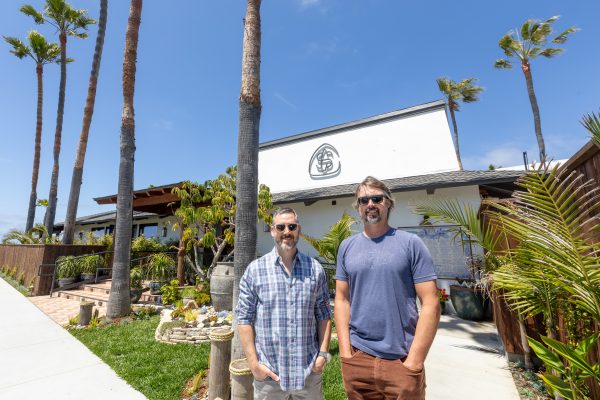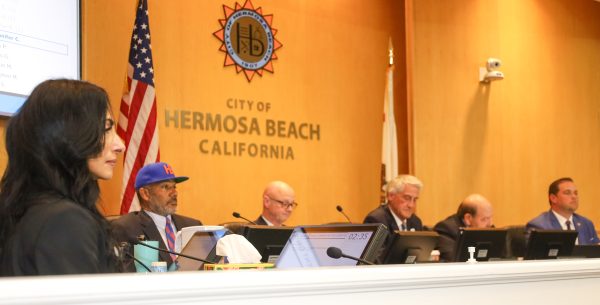
by Matt Sweeting
Photos by Dave Gregerson (20foot.com)
The South Bay is spoiled when it comes to kitesurfing. We have Torrance Beach, El Porto and Marina Del Rey for the advanced and surf inclined rider. In the summer, nearby Belmont Shore is perfect for the beginner with its wide, sandy beaches and consistent cross/onshore winds. And of course there are those secret spots off Palos Verdes. With the right conditions, these spots match top wind spots anywhere on the planet.
And yes, kitesurfing is as easy as it looks, providing you have the proper equipment and instruction.
Kitesurfing made its debut in the mid 1990s when Corey Roeseler patented the “KiteSki” system in Hood River, Oregon. The KiteSki consisted of water skis powered by a two-line kite, controlled via a bar. Then, with the help of Hawaiian waterman Laird Hamilton, Frenchmen Manu Burton and brothers Bruno and Dominique Legaignoux, the sport progressed significantly. Kites became used for big wave riding, flat water freestyling and getting enormous hang time. Because of these pioneers, the equipment rapidly progressed, becoming safer and easier to use.
In 1998, there were an estimated 100 kitesurfers worldwide. Today kitesurfingschool.org estimates the number at 150,000 to 200,000.
Local kiters stay on top of conditions with the iKitesurf weather application on their phones and desktop. They’re the only surfers who love blown out conditions.
Redondo Beach residents Wilfred Poiesz, 47, and his son Casper,15, have kited for nine and six years respectively.
“Kiting is a good balance, utilizing nature’s gifts of waves and wind. It’s a very dynamic sport with lots of variables. It’s never boring and old guys like me can do it and look cool,” Poiesz said.
Wilfred and Casper were born in Holland, home of the 21-year-old, current kitesurfing World Champion Kevin Langaree. The previous world champion, Aaron Hadlow of Britain, was also 21-years-old. He held the title for five consecutive years, making him just 16 when he won his first title.
Scotty Dikson, 39, a professional sailor, said of kitesailing, “It always seemed when we were out racing sailboats that the guys going past us on kiteboards had pretty big grins on their faces.
“I also knew that Long Beach is really a great place to kiteboard, so I didn’t want to pass up the opportunity of learning just minutes from my house.”

Transferable fun and skills
The balance, timing and wave knowledge used in surfing and stand up paddleboarding are huge pluses when it comes to learning to kitesurf. Wakeboarding is probably the closest sport to kitesurfing. The board shapes are very much the same shape and both sports use sharp rails to change direction and load up for jumps as well as to maintain a constant “pull.’
Windsurfing is also very similar. And sailing, like windsurfing, increases your wind awareness, which is a huge part of kitesurfing.
Laura Rose, 30, a Santa Monica resident who kitesurfs locally said, “It was very easy to learn. I liken it to learning to snowboard, possibly even easier and less painful. Within three or four days I was already pulling myself out of the water and onto my board. Upper body strength plays a very little part in kiting. In fact, it takes hardly any upper body strength at all. The hardest and most important part was learning to control the kite. Once that was mastered, the rest was a cinch.”
Joe Webber, 50, another South Bay kitesurfer, got into the sport because of its similarities to paragliding. Joe is well known throughout the South Bay, not just as a great electrician, but also as a big air fiend. It comes from his love of soaring high in the clouds. Kitesurfing has the added advantage for him of not having to trek up a mountainside to get his big air ‘fix’!
Kiting has recently crossed over into snow sports. Skiers and snowboarders are harnessing the wind for massive hang times, and to pull themselves up the slopes and along the flats.
One of the best descriptions I’ve heard of kitesurfing is, ‘It is like windsurfing, only in 3D.”

Make it easy, take a lesson
Kitesurfing’s learning curve is quick, but you need lessons from a qualified instructor. Look for instructors who are certified by either the International Kitesurfing Organization (IKO) or Professional Air Sports Association (PASA). They have undergone a comprehensive instruction and safety program and also carry insurance for both you and themselves. Kitesurfing, like SCUBA diving, is a very straight forward and rewarding sport. However, some important safety measures must be learned. They include recognizing safe wind directions, safe ways to launch and land your kite and how to operate the safety systems on the kite.
Just because you have a friend who is a good kitesurfer does not make him or her, a good, safe instructor.
“A certified instructor will help you pick the right size and brand of kite for your area. He keeps you safe and will be motivated to get you going quickly. He will speed your learning curve so that you can venture off to explore other more advanced beaches,” Poisez advised.
The best nearby beach for learning is Belmont Shore. It has a wide sandy beach and a sea wall that minimizes the swell, offering mellow flat water to practice on. Once you have honed your skills, there are plenty of options in the South Bay. Trump Ocean Trails, Hermosa Beach, Marina Del Ray and Torrance Beach are just some of the many great South Bay beaches for kitesurfing. Don’t forget to check in with local lifeguards to find out the launching and landing areas, as well as any additional kitesurfing rules the local beach may have.
Schools typically offer classes from mid April to early October when the south westerly winds are more consistent, and the water a little warmer.
During the winter months, strong northerly winds and large swells make kitesurfing popular with more practiced kiters.
For more information contact Kitesurf California at www.kitesurfcalifornia.com. They are IKO certified and based in Redondo Beach and Belmont Shore. Or contact Kitesurfari at www.kitesurfari.com. They are PASA certified and based in Huntington. The South California Kitesurf Association (SCKA) is a membership organization to help the needs of kitesurfers in the area.
Author Matt Sweeting is the owner of Kitesurfing California and is a Level 2 IKO instructor. He placed second in the 2006 Red Bull Bintan Kite Event and fifth in the 2005 BKSA Amateurs event at Brighton Beach, Brighton, UK. B

Equipment List:
Safety equipment
Helmet: This is must when learning and in challenging conditions, such as big winds and waves. They are required at many professional kitesurfing events. Prevention is better than cure.
Life vest/Impact vest: Not only will this help you stay afloat in the water, but it will help absorb the impact from mistimed jumps or falls on the water.
Harness: The harness goes around your waist (waist harness) or around your legs and waist like a diaper (seat harness). It is used to help control the pull of the kite, using your body weight rather than your arms.
Wetsuit: Even in warm conditions it is good to wear a wetsuit or thick rash guard. This will prevent wind chill and offers protection from the sun
Line Knife: Most harness manufactures include a knife. If you became tangled in your lines (which more common riding big waves) you need to be able to cut yourself free. In 10 years of kiting I have never had to use my knife. My first instinct is to deploy the safety systems, but as the Boy Scouts say “Be prepared.”
Boards:
There are 3 main types of boards.
Twin tips: These are symmetrical, like wakeboards and snowboards, and will go in either direction without the rider having to turn the board around or ride it switch stance.
Surfboard: These can be ridden with straps, allowing for more aggressive turns and big air. They are good for those new to riding surfboards. Without straps, they allow a freer flowing, surf style. Surfboards need to be “jibed” to turn, or ridden switch stance because they are designed to go in one direction, only. Your old surfboard will do but keep in mind you will be putting much more pressure on the deck of the board than you do surfing, so the thicker the glass job the better
Bi-Directional: These boards are smaller than a surfboard and usually bigger than a twin tip. They are asymmetrical in design and are intended to be ridden in one direction, but usually have an additional fin located on the nose of the board as well as the tail, allowing it to be ridden in both directions. This board is an ideal all around board for someone who likes to jump as well as do a bit of wave riding.
Kites:
Kite design has changed drastically in the last four years. However, to break it down simply, there are two basic kite designs.
Foil Kites: This is the original kite. It relies on the wind to pass through the chambers (air cells) in the kite to inflate it and to provide lift. They are made mostly of fabric (ripstop nylon), with a fixed bridle to maintain the kite’s arc-shape, similar to a paraglider. Foil kites have become popular in snow kiting because they have a great wind range, pack up smaller, require no manual inflation (tiring at altitude) and will absorb impact with the snow better than manually inflated kites because the air pressure in the chambers is not as great. And they will dump most of the air out of their cells upon impact.
Open cell foils rely on a constant airflow against the inlet valves to stay inflated. They are generally impossible to relaunch if they hit the water, since they have no means of avoiding deflation, and quickly become soaked.
Closed cell foils are almost identical to open cell foils except they are equipped with inlet valves to hold air in the chambers, keeping the kite inflated (or, at least, making the deflation extremely slow), even in the water. Water relaunches with closed cell foil kites are simpler. A steady tug on the power lines typically allows them to take off again.
Leading Edge Inflatables (LEIs): These are typically made from ripstop nylon with an inflatable, plastic bladder that spans the front edge of the kite. Separate, smaller bladders are perpendicular to the main bladder, forming the chord or foil of the kite. The inflated bladders give the kite its shape and also keep the kite floating once dropped in the water. LEIs are the most popular choice among kitesurfers thanks to their quicker, more direct response to the rider’s inputs, easy relaunchability once crashed into the water, and resilient nature. If an LEI kite hits the water/ground too hard or is subjected on water to substantial wave activity, bladders can burst or it can be torn apart, which explains why foil kites are a more popular choice for snow and land kiting. B










